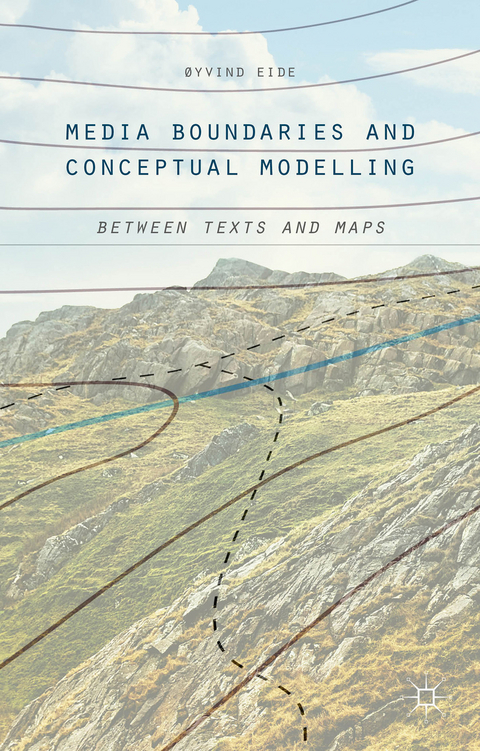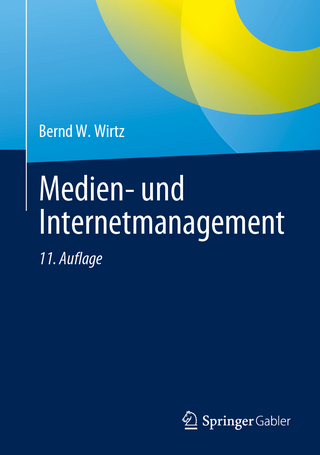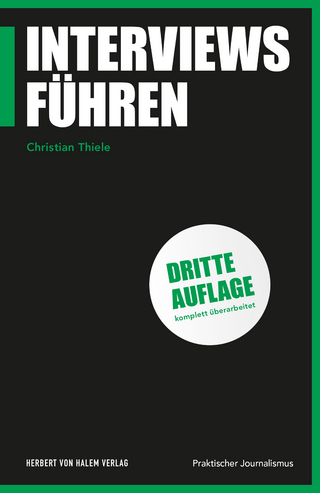
Media Boundaries and Conceptual Modelling
Between Texts and Maps
Seiten
2015
|
1st ed. 2015
Palgrave Macmillan (Verlag)
978-1-137-54457-5 (ISBN)
Palgrave Macmillan (Verlag)
978-1-137-54457-5 (ISBN)
It intersects also with the digital by addressing the problem with the help of a digital humanities method: computer assisted conceptual modelling.
It contributes to the further development of digital humanities and bridges the two areas of digital humanities and intermedia studies.
Media Boundaries and Conceptual Modelling forms part of the humanities tradition by facing one of the fundamental problems since antiquity: how different media represent the world we live in. It intersects also with the digital by addressing the problem with the help of a digital humanities method: computer assisted conceptual modelling. And it acknowledges the spatial turn by investigating the boundary between what has traditionally been the two main media for representation of geospatial information: texts and maps.
It contributes to the further development of digital humanities and bridges the two areas of digital humanities and intermedia studies. Further, it strengthens the theoretical foundation for research and teaching in spatial digital humanities. The book meets the lack of critical discussion of the practice of digital mapping, offering a theoretically based understanding of such practices from a humanities perspective. More generally,it contributes to the theoretical discussion of modelling in digital humanities.
It contributes to the further development of digital humanities and bridges the two areas of digital humanities and intermedia studies.
Media Boundaries and Conceptual Modelling forms part of the humanities tradition by facing one of the fundamental problems since antiquity: how different media represent the world we live in. It intersects also with the digital by addressing the problem with the help of a digital humanities method: computer assisted conceptual modelling. And it acknowledges the spatial turn by investigating the boundary between what has traditionally been the two main media for representation of geospatial information: texts and maps.
It contributes to the further development of digital humanities and bridges the two areas of digital humanities and intermedia studies. Further, it strengthens the theoretical foundation for research and teaching in spatial digital humanities. The book meets the lack of critical discussion of the practice of digital mapping, offering a theoretically based understanding of such practices from a humanities perspective. More generally,it contributes to the theoretical discussion of modelling in digital humanities.
Øyvind Eide is Lecturer and Research Associate at the Chair of Digital Humanities, University of Passau, Germany. He has a PhD in Digital Humanities from King's College London and has worked with cultural heritage information and digital humanities at the University of Oslo since the 1990s.
Part: I 1. Introduction 2. Texts, maps, and the landscape 3. Critical stepwise formalisation Part: II 4. Case studies 5. Towards a typology of media differences Part: III 6. Texts and maps as media expressions 7. GIS and digital mapping 8. Critical stepwise formalisation reloaded
| Erscheint lt. Verlag | 29.9.2015 |
|---|---|
| Zusatzinfo | XIII, 230 p. |
| Verlagsort | Basingstoke |
| Sprache | englisch |
| Maße | 140 x 216 mm |
| Themenwelt | Geisteswissenschaften ► Sprach- / Literaturwissenschaft |
| Naturwissenschaften | |
| Sozialwissenschaften ► Kommunikation / Medien ► Journalistik | |
| Sozialwissenschaften ► Kommunikation / Medien ► Kommunikationswissenschaft | |
| Sozialwissenschaften ► Kommunikation / Medien ► Medienwissenschaft | |
| Sozialwissenschaften ► Soziologie | |
| Wirtschaft | |
| ISBN-10 | 1-137-54457-0 / 1137544570 |
| ISBN-13 | 978-1-137-54457-5 / 9781137544575 |
| Zustand | Neuware |
| Haben Sie eine Frage zum Produkt? |
Mehr entdecken
aus dem Bereich
aus dem Bereich


